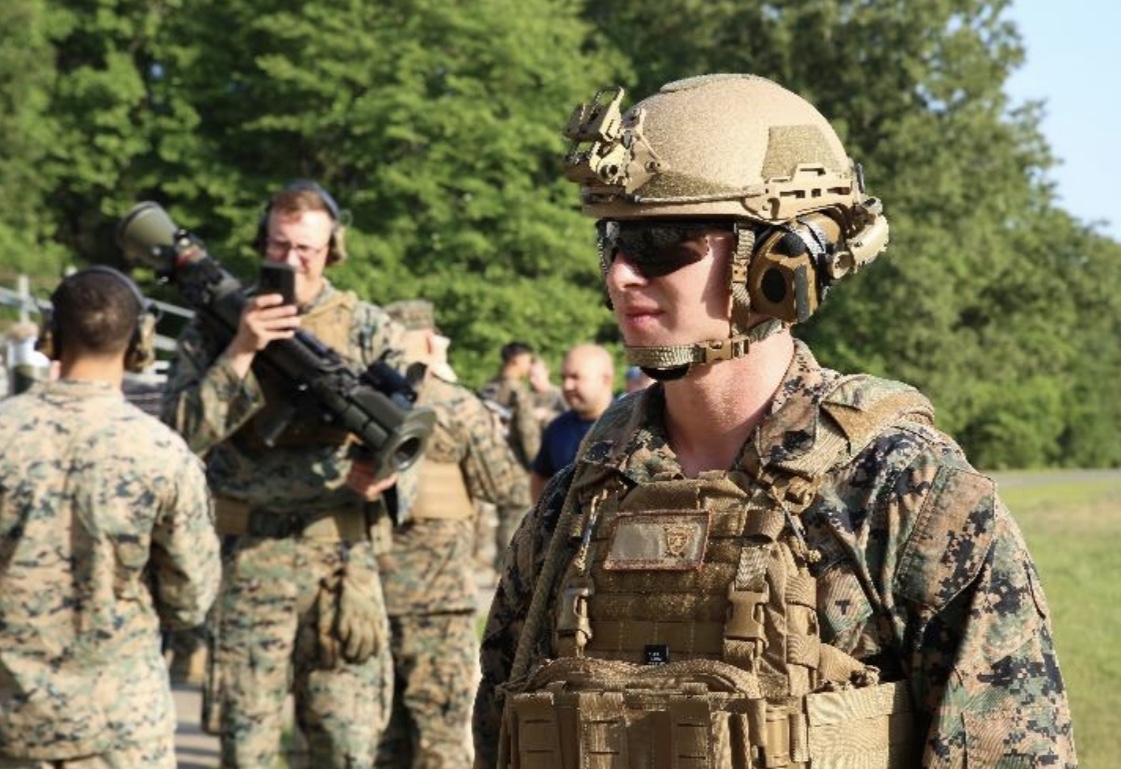MARINE CORPS BASE QUANTICO, Va.—In July, Marine Corps Systems Command began fielding new hearing enhancement devices to support infantry Marines in various training and combat environments.

The HED protects the warfighter’s hearing and enhances voice communication in loud environments. The capability increases Marines’ situational awareness by enabling them to communicate messages more safely and efficiently during combat.
“This hearing enhancement device protects Marines from noise levels that are above safe hearing levels,” said CWO4 David Tomlinson, MCSC’s infantry weapons officer. “It also allows for sound localization, which means you can tell where a voice or noise is coming from.”
The ruggedized headset is adaptable to challenging environments ranging from the cold weather of the Sierra Nevada Mountains to the intense heat of Pacific jungles. Marines can wear the system with the Marine Corps Enhanced Combat Helmet.
MCSC is fielding both a communication-enabled and non-communication-enabled version. The non-communication version allows Marines to hear audible messages. The communication-enabled model includes a push-to-talk adapter and cables to connect to Marine Corps ground tactical radios, said Tomlinson. As a result, Marines can listen to radio transmissions even when the system is powered off.
“A major goal of this system is to increase communication in loud, noisy environments so Marines can continue to do their job,” said Tomlinson. “The hearing enhancement device supports this concept.”
The system also includes an adjustable volume option. CWO4 Mark Erhardt, infantry weapons officer with the Infantry Officers Course in Quantico, said Marines could decrease volume to better hear radio traffic or increase it for external voices nearby.
“It’s a common understanding that the battlefield is loud, and the fog of war includes many distractions,” said Erhardt. “The new hearing enhancement device will aid Marines in any situations involving sending or receiving messages, which increases overall awareness.”
Hearing protection is a pillar characteristic of the system. The HED complements the Combat Arms Earplug Generation IV—the Marine Corps’ current hearing protection system—by offering a secondary level of protection to further avoid hearing damage.
The HED comprises a setting for inner ear protection, which assists in maintaining device quality and capability. Marines can use this setting in situations where noise levels exceed a certain threshold, said Tomlinson.
Previously, Marines commonly used foam earplugs to block noise and protect their hearing on the battlefield. Tomlinson said the plugs sufficiently reduced noise decibels heard by Marines but did not allow them to vocalize messages to one another.
“Traditional earplugs block all noise, where this new system filters noise and still allows for situational awareness,” said Tomlinson. “Marines receiving the new HED have never had a capability like this before.”
Story by Marine Corps Systems Command Office of Public Affairs & Communication
U.S. Marine Corps photo by Tonya Smith


Carl G selfie makes this.
That setup is hilarious. Also how tiny can your ears be if you can wear Peltors at 45 degrees cant?
Maybe it’s a borrowed helmet for the photo op that’s way too big?
Will they be buying a one-unit system (ie full OpsCore AMP) or will it be the hodge-podge of OpsCore, AXL and Peltor shown in the image?
The Marines are fielding a new helmet and the headsets (Peltor COMTAC V/VI) and related push to talks, etc. are all from Atlantic Signal. The Marine pictured is using aftermarket kit.
Any info on the helmet integration? Under the helmet, 3M ARC Arms, etc?
The main guy in that picture is Sgt. Townsend. That headset and Kevlar is all his own equipment.
Is that a Hard Head Veterans (made in China?) helmet? PAO needs to be a bit more careful with their photos.
Yes – that is HHV : (